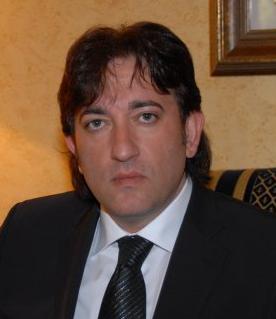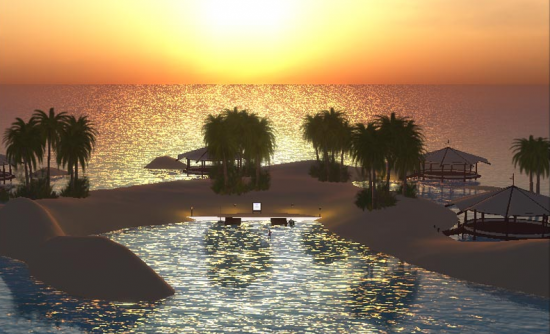Developers of the Aurora Sim version of OpenSim are building a hypergrid bridge to mainline OpenSim, said Enrico Ranucci, head of New Voice, d.i., an Italian technology company that’s been in business since 2005.
Aurora Sim uses a different version of hypergrid, called IWC — InterWorldConnector — to allow teleportation between grids.
Currently, such teleports are possible between the Aurora Sim-based Nova Grid, and some Aurora Sim testing grids, Ranucci told Hypergrid Business.
However, the Aurora Sim developers, including the lead developer known as Revolution Smythe, are working on a bridge that would allow people to teleport to Aurora Sim-based grids from OSGrid, which runs mainline OpenSim.

“Right now, we have successfully teleported between standalones,” said Ranucci, referring to OpenSim regions not connected to any grid. “We need to do more work for grid mode.”
He said he hopes to have the bridge finished to connect regular OpenSim grids to Aurora Grids “in a very near future.”
Once the bridge is built, residents on new Aurora Sim-based grids will no longer be cut off from friends and events on other grids — and will be even able to teleport over with their existing avatars and inventories. This may help spur adoption of the Aurora Sim software by grid managers. (See our previous story about Aurora Sim here.)
Ranucci currently runs the Nova Grid, a new 34-region commercial grid that runs on the Aurora Sim platform. It is currently the largest grid using the software, and the chief commercial grid.
New Voice is probably better known for its $9.95 OSGrid regions. OSGrid is the largest OpenSim grid, and allows anyone to connect self-hosted regions for free, though many residents choose to use third-party hosting providers like New Voice to get their hosting in order to get higher concurrency, stability, backups, more prims, and better support than they could get at home.
New Voice is currently running 187 regions on OSGrid. If it was its own grid, it would be the 12th largest on OpenSim. (Full story about current grid sizes here.)
Most recently, a Gor-themed role-playing community from Second Life moved over to OSGrid and rented regions from New Voice, Ranucci said.
But despite its significant presence on OSGrid and mainline OpenSim, New Voice has been building out its own private commercial grid, with Aurora Sim.
“I’m not reducing OSGrid hosting,” he said. “OSGrid is still the main open source grid. But I have to admit, many of my customers switched over to Aurora, ever since I gave them one month of free rent to try out Nova Grid.”

Setting up his own grid would create new business opportunities for his company, he explained.
But what’s it in for the customers?
Many features not currently available in main line OpenSim, and more stability, Ranucci said.
“Aurora is simply cool,” he said. “It is all working out of the box, so it’s really simple to set up — groups, offline instant messaging, search, profiles, currency, voice, abuse reports, a grid manager, a grid website, support for Second Life Viewer 2 features [such as media-on-a-prim], physics, a script engine — plus a lot of new features, fully working.”
For example, one of the new features unique to Aurora is variable-sized regions.
“And the best part of it is that it never crashes,” he added. “A protection module prevents region crashes, disabling all services in the region and keeping it up. This allows the region owner to do a safe backup of the region before restarting it. That’s really useful.”
In addition, a region is often able to restart itself on its own, he said, if the cause of a problem was something temporary like a misbehaving avatar or script.
Hosted regions on Nova Grid start at US $9.95 a month for up to 80,000 prims, with voice and currency included.
People wishing to try out Aurora Sim can also do it on their own for free, by down loading the region server software, Ranucci said. They are welcome to connect their regions to Nova Grid if they would like to be part of a larger community. Full connection details are here — the process is straightforward, but does require the ability to open and forward ports. There is no charge for the connection, though donations are welcome to offset asset database costs. Half of all donations go to the Aurora Sim open source development team.
The future is commercial
Non-profit grids have an important role to play in OpenSim, helping develop and push the boundaries of the software, and allowing people a low-cost way to get into the virtual worlds.
However, commercial, for-profit grids can offer a much higher quality of service for residents, said Ranucci.
“A for-profit grid owners can’t delay assistance to customers by saying, ‘Hey, it’s free, so don’t complain too much,'” said Ranucci. “I see that, unfortunately, very often in non-profit projects. Running a for-profit business means you’re cut off from that excuse.”
- OSgrid back online after extended maintenance - April 16, 2025
- Analysts predict drop in headset sales this year - March 25, 2025
- OSgrid enters immediate long-term maintenance - March 5, 2025
